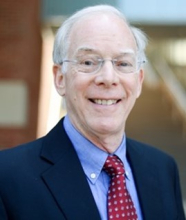MSE 298 Seminar: Materials And Architectures For High Rate Energy Storage

Professor
Department of Materials Science and Engineering
University of California, Los Angeles
Abstract: The prospect of developing energy storage materials with the energy density of batteries and the power density and cycle life of electrical double-layer capacitors is an exciting direction that has yet to be achieved. With such materials there is the promise of charging in minutes, much faster than batteries, without compromising the amount of charge storage. Our research has focused on so-called pseudo capacitive materials in which faradaic reactions are sufficiently rapid so that the electrochemical features are similar to those of an electrical double-layer capacitor, but with significantly higher levels of energy storage because of the redox reactions. Using Nb2O5 as a model system, we have established several criteria for identifying materials that exhibit pseudocapacitor-like properties and retain high energy density at high rates of charge/discharge.
The design of electrode architecture offers another route for achieving high rate energy storage.This presentation will discuss the design principles for a non-planar, solid-statebattery consisting of a 3D LiFePO4 (LFP) post array and a planar, Li anode separated by anionogel electrolyte.To extend these concepts toward large format designs, we have developed 3D lattice configurations in which the LFP architecture is fabricated by direct ink writing. The areal energy density is determined by the thickness and number of LFPlayers, leading to areal capacities above 3 mAh cm-2.
Bio: Bruce Dunn is the Nippon Sheet Glass professor of materials science and engineering at UCLA. His research interests concern the synthesis of inorganic and organic/inorganic materials, and the characterization of their electrical, optical, biological and electrochemical properties. His recent work on electrochemical energy storage includes three-dimensional batteries and pseudo capacitive materials. Among the honors he has received are a Fulbright research fellowship, the Orton Lectureship from the American Ceramic Society, named to the Web of Science list of Highly Cited Researchers, awards from the Department of Energy for outstanding research in materials science, and invited professorships in France, Japan and Singapore. He is a Fellow of the American Ceramic Society, the Materials Research Society and a member of the World Academy of Ceramics. In addition to serving on the Board of Reviewing Editors at Science, he is a member of the editorial boards of Advanced Energy Materials, Solid State Ionics, Advanced Electronic Materials and Journal of the American Ceramic Society.
Share
Related Content
| Attachment | Size |
|---|---|
| 1.02 MB | |
| 632.88 KB |
Upcoming Events
-
UCI CEE Affiliates, A.I. Implementation, Spring 2024 Quarterly Meeting Event
-
EECS Seminar: AI Models for Edge Computing - Hardware-aware Optimizations for Efficiency
-
CBE 298 Seminar: Electrified Ultrahigh-Temperature Manufacturing of High Entropy Alloys
-
MSE 298 Seminar: New Platforms For Quantum Sensing and Quantum Computing
-
E-SONIC: Engineering-Symphonic Orchestra New Instrument Competition
